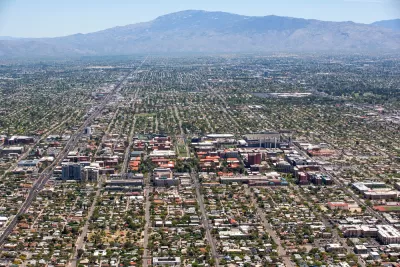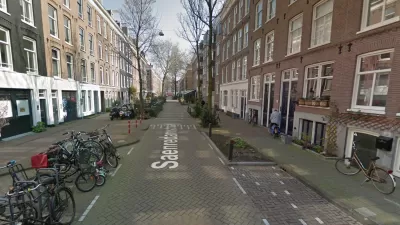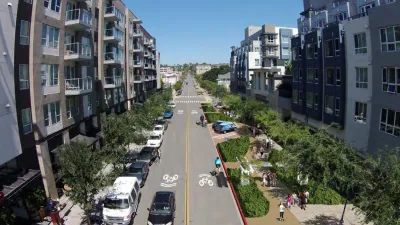Some college campuses need more parking than others, depending on commuting rates and walkable housing supply. Some campus planners are hoping, however, that soon all universities will need a lot less parking.

"With just one parking space for every five people, on a campus of roughly 65,000, the University of Wisconsin-Madison has one of the lowest parking ratios of any major university in the country," according to an article by Lisa Prevost.
"Because visitors to the 936-acre campus often have a hard time finding parking, the university’s latest master plan, nearing completion, recommends an additional 2,200 spaces over the next 20 to 40 years," adds Prevost.
But Gary A. Brown, the director of campus planning, is hoping none of that will be necessary. "When Mr. Brown looks into the future, he sees a campus even more reliant on ride-hailing services like Uber and car-sharing services like Zipcar, as well as the likely emergence of autonomous vehicles, trends that could substantially decrease parking demand," according to Prevost.
Prevost surveys the opinion of designers, research, and parking consultants, to see if Brown's predictions could come to fruition.
FULL STORY: On the College Campus of the Future, Parking May Be a Relic

Alabama: Trump Terminates Settlements for Black Communities Harmed By Raw Sewage
Trump deemed the landmark civil rights agreement “illegal DEI and environmental justice policy.”

Planetizen Federal Action Tracker
A weekly monitor of how Trump’s orders and actions are impacting planners and planning in America.

The 120 Year Old Tiny Home Villages That Sheltered San Francisco’s Earthquake Refugees
More than a century ago, San Francisco mobilized to house thousands of residents displaced by the 1906 earthquake. Could their strategy offer a model for the present?

In Both Crashes and Crime, Public Transportation is Far Safer than Driving
Contrary to popular assumptions, public transportation has far lower crash and crime rates than automobile travel. For safer communities, improve and encourage transit travel.

Report: Zoning Reforms Should Complement Nashville’s Ambitious Transit Plan
Without reform, restrictive zoning codes will limit the impact of the city’s planned transit expansion and could exclude some of the residents who depend on transit the most.

Judge Orders Release of Frozen IRA, IIJA Funding
The decision is a victory for environmental groups who charged that freezing funds for critical infrastructure and disaster response programs caused “real and irreparable harm” to communities.
Urban Design for Planners 1: Software Tools
This six-course series explores essential urban design concepts using open source software and equips planners with the tools they need to participate fully in the urban design process.
Planning for Universal Design
Learn the tools for implementing Universal Design in planning regulations.
Clanton & Associates, Inc.
Jessamine County Fiscal Court
Institute for Housing and Urban Development Studies (IHS)
City of Grandview
Harvard GSD Executive Education
Toledo-Lucas County Plan Commissions
Salt Lake City
NYU Wagner Graduate School of Public Service





























